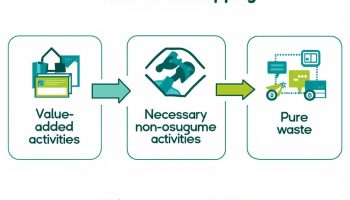
Successful employee retention strategies remain vital for organizations aiming to keep valuable talent. Competitive compensation, career development pathways, work-life integration, recognition programs, inclusive culture, and workplace environment enhancements form the backbone of effective retention approaches. These six key elements create a solid foundation for companies wanting to maintain their workforce in today’s competitive job market.
Why Retention Strategies Matter in Business
Successful employee retention strategies directly impact your organization’s bottom line by cutting the high costs of turnover, which can exceed 200% of an employee’s salary. Beyond saving money, these strategies protect valuable institutional knowledge, maintain team unity, and safeguard client relationships that employee departures might damage.
Companies with comprehensive retention approaches enjoy higher productivity since staff stay engaged instead of constantly training replacements. Your organization can become an employer of choice when known for strong retention practices, giving you an edge in attracting top talent while building a positive industry reputation. Effective retention planning transforms your workforce from a recurring expense into a long-term investment.
Strong retention practices also help preserve company culture and morale. When employees see their colleagues regularly leaving, it can create uncertainty and decreased commitment. By implementing targeted retention strategies, you’ll create stability that benefits both current staff and organizational performance.
6 Successful Employee Retention Strategies: Explore Effective Approaches to Keep Your Team Engaged
Employee retention is a critical concern for organizations looking to maintain a strong and committed workforce. With rising turnover rates and the costs associated with hiring and training new talent, implementing successful employee retention strategies has never been more important.
In this section, we will explore six key strategies that can help you create an environment where employees feel valued and motivated to stay. From competitive compensation packages to fostering an inclusive company culture, each strategy offers a unique approach to enhancing employee satisfaction and engagement.
By combining these methods, you can effectively position your organization as a desirable place to work, ultimately leading to improved retention and long-term success. Discover how each of these strategies can turn your workplace into a hub of loyalty and productivity.
1. Competitive Total Compensation Packages
Implementing competitive total compensation packages is one of the most effective employee retention strategies you can deploy. When your compensation structure aligns with or exceeds industry standards, you create a strong financial incentive for talent to stay. Start by conducting regular salary benchmarking to ensure base pay remains competitive across all positions.
Performance-based bonuses and profit sharing programs give employees a stake in your company’s success, fostering long-term commitment. These variable compensation elements should clearly connect individual contributions to rewards.
Your benefits package should go beyond the basics to include:
- Comprehensive health coverage with mental health support
- Robust retirement plans with employer matching
- Stock options or equity programs for longer-term investment
- Flexible spending accounts for healthcare and dependent care
Don’t underestimate the value of lifestyle perks in your staff retention ideas. Gym memberships, meal allowances, transportation subsidies, and professional development stipends often differentiate your compensation package from competitors while supporting employee wellbeing and work-life balance.
2. Clear Career Development Pathways
Implementing successful employee retention strategies begins with providing clear advancement opportunities. Career development pathways are essential for keeping your top talent engaged and committed to your organization’s long-term success. When employees can visualize their future within your company, they’re less likely to seek opportunities elsewhere.
Start by creating structured promotion tracks with clearly defined milestones that outline what employees need to accomplish to advance. Support this framework with personalized Individual Development Plans (IDPs) that align individual career goals with organizational needs. These plans should be revisited quarterly to track progress and make necessary adjustments.
Mentorship and coaching programs significantly boost retention by connecting employees with experienced leaders who can provide guidance and support. This relationship-based approach to professional development goals helps employees navigate their career path while building valuable internal networks.
Invest in skills training and certification support to help employees stay current in their fields. This demonstrates your commitment to their growth while enhancing your workforce capabilities. Additionally, offer cross-functional rotation opportunities that allow employees to explore different areas of the business, preventing stagnation and fostering a deeper understanding of the organization.
Expert Insight: To retain top talent, establish clear career development pathways with structured promotion tracks and personalized Individual Development Plans. Pair this with mentorship programs for guidance and support, and invest in skills training and cross-functional rotation to enhance growth and engagement, preventing stagnation and fostering commitment to the organization.
3. Work-Life Integration Programs
Implementing effective work-life integration programs stands as one of the most successful employee retention strategies in today’s competitive job market. By offering flexible working hours and remote work options, you enable employees to manage their professional responsibilities alongside personal commitments. Many organizations have discovered that unlimited or generous PTO policies significantly reduce burnout while increasing loyalty and productivity.
Long-term employees particularly value sabbatical programs that allow them to recharge while maintaining job security. These extended breaks often result in renewed commitment and fresh perspectives upon return. Family-friendly policies, including comprehensive parental leave and childcare support options, demonstrate your understanding of employees’ holistic needs beyond the workplace.
Mental health days and wellness programs further enhance your retention strategy by acknowledging the importance of psychological wellbeing. Consider implementing:
- Regular wellness challenges with incentives
- Mental health resource access and counseling services
- Stress management workshops
- Fitness reimbursements or onsite facilities
- Meditation or mindfulness sessions during work hours
When employees feel their personal lives are respected and supported, their commitment to your organization typically strengthens, reducing costly turnover and preserving institutional knowledge.
Expert Insight: Implementing work-life integration programs like flexible hours, generous PTO, and sabbatical options enhances employee retention. Prioritizing mental health with wellness initiatives and family-friendly policies fosters loyalty and productivity. Supporting personal commitments leads to a more committed workforce, reducing turnover and preserving valuable institutional knowledge.
4. Recognition and Rewards: Key to Successful Employee Retention Strategies
Implementing effective recognition and rewards systems is crucial for successful employee retention strategies. When you acknowledge employee contributions regularly, you create a culture where staff feel valued and motivated to stay. Start by establishing structured performance reviews that provide clear feedback on achievements and areas for improvement.
Peer recognition platforms allow team members to celebrate each other’s accomplishments, fostering a supportive community atmosphere. These platforms can be particularly effective when implementing collaborative project work, as they reinforce positive team dynamics.
Consider these proven recognition approaches:
- Service anniversary celebrations that honor loyalty and commitment
- Spot bonuses that immediately reward exceptional contributions
- Public acknowledgment of achievements in company meetings or newsletters
- Personalized recognition tailored to individual preferences
- Non-monetary rewards like additional time off or learning opportunities
The most effective recognition programs align with your company values while addressing what employees truly value. Data shows that organizations with robust recognition systems experience 31% lower voluntary turnover than those without such programs. By implementing creative staff retention ideas through meaningful recognition, you’ll build a workplace where employees feel appreciated and committed to long-term success.
Expert Insight: To enhance employee retention, implement recognition and rewards systems that resonate with your team’s values. Establish structured performance reviews and peer recognition platforms, fostering a culture of appreciation. Organizations with effective recognition experience significantly lower turnover, so prioritize meaningful acknowledgments to cultivate commitment and motivation.
5. Inclusive Company Culture
Creating an inclusive company culture is one of the most effective successful employee retention strategies you can implement. When employees feel they belong, they’re more likely to stay with your organization long-term. Start by organizing regular team-building activities that bring different departments together, fostering cross-functional relationships and breaking down silos.
Establish employee resource groups (ERGs) to support diverse populations within your workforce. These groups provide safe spaces where employees with shared characteristics or experiences can connect and advocate for their needs. Many organizations with successful employee engagement strategies find that ERGs significantly boost retention.
Maintain transparent communication channels where information flows freely between leadership and staff. This includes regular town halls, honest updates about company performance, and clear explanations of strategic decisions. Implement diversity and inclusion initiatives that go beyond basic compliance, focusing instead on creating genuine equity in hiring, promotion, and daily operations.
Finally, deploy regular pulse surveys and feedback mechanisms to take the temperature of your organization and identify issues before they lead to turnover. Act quickly on this feedback to show employees their input truly matters.
Expert Insight: Fostering an inclusive company culture enhances employee retention by promoting belonging and connection. Establish employee resource groups and maintain transparent communication to ensure all voices are heard. Regularly solicit and act on feedback to demonstrate that employee input is valued, ultimately creating a supportive workplace environment.
6. Workplace Environment Enhancement
Creating an optimal physical workspace is one of the most effective employee retention strategies you can implement. When you invest in modern office amenities and ergonomic equipment, you demonstrate your commitment to employee comfort and productivity. This includes adjustable desks, supportive chairs, and proper lighting that reduces eye strain.
Designing dedicated collaboration spaces alongside quiet zones allows employees to choose environments that match their current tasks. This flexibility helps teams collaborate effectively on projects while still providing quiet areas for focused work.
Health and wellness facilities show your organization values employee wellbeing beyond just productivity. Consider:
- On-site fitness centers or gym membership subsidies
- Relaxation rooms for mental breaks
- Healthy food options in cafeterias or break rooms
- Standing desks and active workstations
Social spaces for informal interaction foster relationship-building and creativity. These casual meeting areas help break down silos between departments and encourage innovation through spontaneous conversations.
Regular workspace improvements based on employee feedback demonstrate your commitment to addressing their concerns. When you implement changes based on their suggestions, you reinforce that their opinions matter, further enhancing retention rates by making employees feel valued and heard.

Successful Employee Retention Strategies
Successful employee retention strategies encompass six essential approaches: competitive total compensation, clear career development pathways, work-life integration programs, recognition and rewards systems, inclusive company culture, and workplace environment enhancement. These comprehensive strategies work together to create an engaging workplace where employees feel valued, supported, and motivated to build long-term careers with your organization.
Importance of Employee Retention Strategies
Implementing successful employee retention strategies through these six essential approaches is crucial for business sustainability and growth. Organizations that prioritize retention experience significant cost savings by:
- Reducing turnover expenses
- Preserving institutional knowledge that drives innovation
- Maintaining consistent customer service quality
- Gaining competitive advantage through engaged employees
Engaged employees who deliver superior performance also contribute to creating a positive brand reputation in the marketplace.






